IN THE GALLERY: Stone Blue
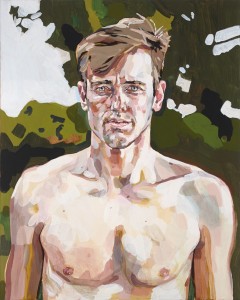
Acrylic on canvas
76 x 61cm
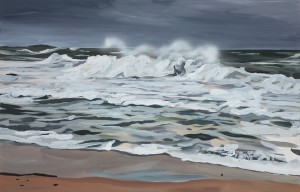
Acrylic on canvas
85 x 133cm

Acrylic on canvas
122 x 64cm
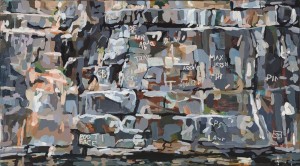
Acrylic on canvas, 50 x 91cm
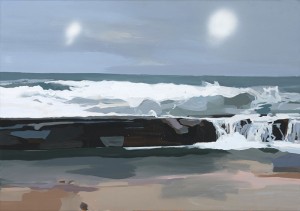
Acrylic on canvas
72 x 102cm
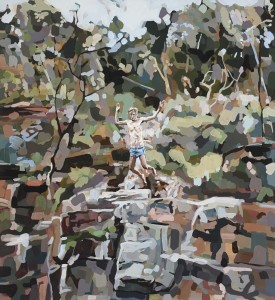
Acrylic on canvas
122 x 112cm
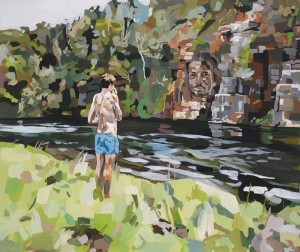
Acrylic on canvas
152 x 183cm
Oliver Watts
12 Jun - 6 Jul 2013
In this exhibition Oliver Watts continues a subject that he has been painting since 2009, Angourie, a small town outside Yamba in New South Wales north coast. For Watts it is a microcosm of the social and political concerns of Australia as a whole and in this exhibition he focuses on small actions of dissent and youthful rebellion. Watts has archived in these paintings the performances and marks made by the locals and back-backers that frequent the old quarry’s Blue and Green Pools. The works are full of energy and play; they use these performances to conjure notions of self-sovereignty, rights of passage and freedom. Watts’ work is a practice of quotation and translation.
The primary works Leap and Green Pools archive the common show of bravado, jumping off the cliffs into the deep freshwater quarry pools. The Apollonian Klaus ecstatically repeated the dangerous jump for the painter, trying to catch the right image. Like Yves Klein’s Leap into the Void the image conjures anarchic free fall. These sorts of rituals of risk can be a way for young people to stamp their authority and forge an identity for themselves.
This rebellion is found also in the rock face graffiti wall which is a strange conflation of urban technique with Arcadian nature. Indeed often the graffitists use the natural ochre to write back onto the bluestone walls. This medium is even more potent when that graffiti points to local Aboriginal political issues. Flashes of spray paint appear as seaspray in a series of moody oceanscapes, disrupting images of Romantic sovereign freedom with a technique borrowed from street art.
In EDDA Watts archives a found piece of writing left in Pandanus seeds. Edda is a poetic form from Iceland and one wonders if this name belongs to an Icelandic backpacker far away from home. In this small intervention in the place, she or a friend, makes it their own, at least for a small while. Site specific and personal in nature, these actions of mark making bring to mind land artists such as Richard Long.
Using Angourie as a starting point Watts explores what Frieze’s Jorg Heiser calls Conceptual Romanticism. The archived actions are performative but Watts instills his archive with his own emotion. Using the tradition of painting, he questions notions of identity and freedom. In the end is the leap an Apollonian resurrection or an Icarian fall?
Watts completed his PhD in art history and jurisprudence at the University of Sydney in 2009 and lectures at the College of Fine Arts (UNSW). He is currently a finalist in the Hazelhurst Art Award 2013 and has been a finalist in prizes including the Mosman Art Prize, the Helen Lempriere Travelling Scholarship and the Brett Whitely Scholarship Exhibition and won the Noel Chettle Art Prize. He was a founding member of the Chaser Team, as cartoonist and illustrator.
-Oliver Watts, 2013
